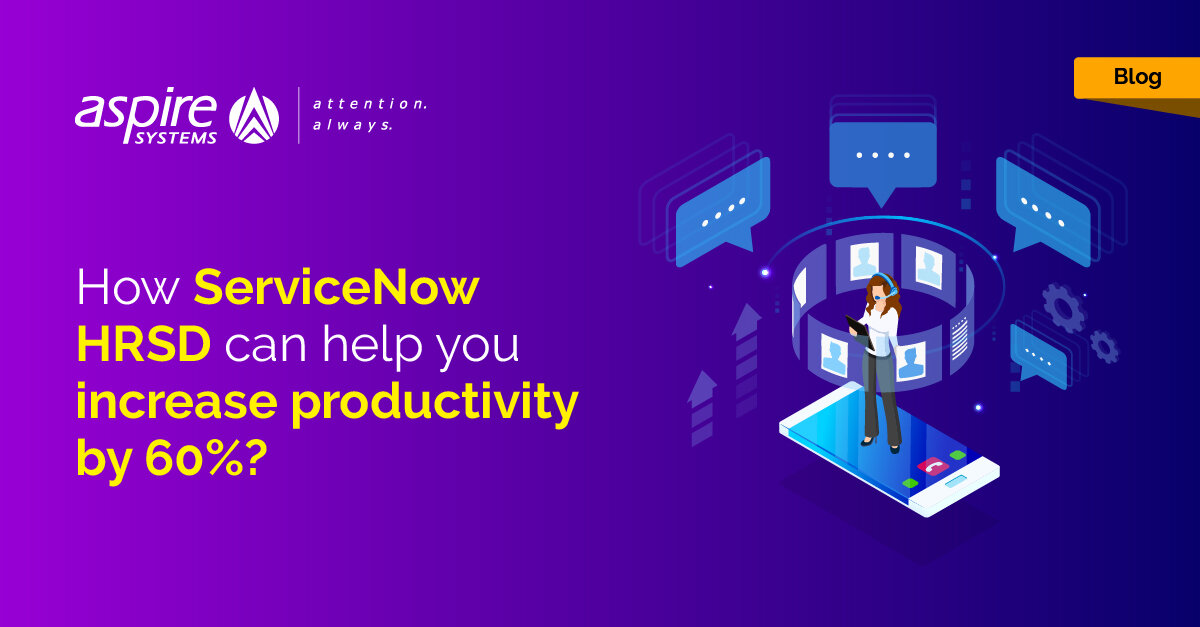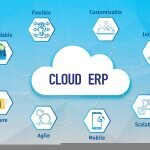The Benefits of HR Software: An Overview of HRSD ERP
Welcome to our overview of HRSD ERP software and its many benefits for businesses of all sizes. Human resource management is a crucial aspect of any organization, and using the right software can streamline processes, improve efficiency, and ultimately save time and money. In this article, we will explore the various advantages of implementing HR software like HRSD ERP, from automating repetitive tasks to enhancing employee engagement and performance management.
Overview of HRSD ERP
HRSD ERP, or Human Resource Service Delivery Enterprise Resource Planning, is a comprehensive software solution designed to streamline and optimize HR processes within an organization. This system consolidates all HR-related activities into a centralized platform, providing tools for managing employee information, payroll, benefits administration, recruitment, performance evaluations, and more.
One of the key features of HRSD ERP is its ability to automate repetitive tasks and reduce manual data entry, allowing HR professionals to focus on more strategic initiatives. By eliminating administrative burdens, this system enables HR departments to operate more efficiently and effectively, leading to cost savings and improved productivity.
HRSD ERP also provides real-time access to data, making it easier for decision-makers to analyze trends and make informed choices. With customizable reporting capabilities, organizations can track key metrics such as employee turnover rates, training expenses, and recruitment success rates. This data-driven approach helps businesses identify areas for improvement and implement targeted solutions to enhance overall performance.
Additionally, HRSD ERP offers self-service tools for employees, allowing them to access and update their information, submit time-off requests, enroll in benefits, and more. This empowers employees to take control of their HR needs, reducing the burden on HR professionals and improving overall satisfaction and engagement.
Overall, HRSD ERP is a powerful solution that can revolutionize HR operations within an organization. By centralizing data, automating processes, providing real-time insights, and empowering employees, this system can drive efficiency, productivity, and strategic decision-making. Implementing HRSD ERP can transform the way HR departments operate, leading to improved outcomes for both employees and the organization as a whole.
Key features of HRSD ERP
HRSD ERP, also known as Human Resource Software Development, is a powerful tool that helps organizations manage their human resources effectively. It offers a wide range of features that streamline HR processes, increase efficiency, and improve overall productivity. Let’s take a look at some key features of HRSD ERP.
1. Centralized Database
One of the main features of HRSD ERP is its centralized database, which stores all employee information in one place. This enables HR professionals to access important data quickly and easily, without having to search through multiple systems or files. With a centralized database, HR departments can maintain accurate records, track employee performance, and generate reports with just a few clicks.
2. Employee Self-Service Portal
One of the standout features of HRSD ERP is the employee self-service portal, which allows employees to access and update their own information. Through the portal, employees can view their pay stubs, request time off, update personal information, and even enroll in benefits programs. This not only empowers employees to take control of their own HR tasks but also reduces the workload on HR staff. By allowing employees to manage their own information, HR departments can save time and focus on more strategic initiatives.
3. Compliance and Regulations
HRSD ERP systems also come equipped with features that help organizations stay compliant with various regulations and laws. From tracking employee certifications to managing leave policies, HRSD ERP ensures that organizations are up to date with all legal requirements. This helps mitigate risk and avoid costly penalties associated with non-compliance. With built-in compliance features, HR departments can rest assured that they are following all necessary regulations.
4. Performance Management
Another key feature of HRSD ERP is its performance management capabilities. Through the system, HR professionals can set goals, track progress, and provide feedback to employees on their performance. This helps organizations identify high-performing employees, address areas for improvement, and ultimately drive better business results. By streamlining the performance management process, HR departments can foster a culture of continuous improvement and development within the organization.
5. Reporting and Analytics
HRSD ERP systems offer robust reporting and analytics tools that enable HR departments to track key metrics and generate insights into workforce trends. From turnover rates to workforce demographics, these tools provide valuable data that can inform strategic decision-making. By analyzing trends and patterns within the organization, HR professionals can identify areas for improvement, optimize workforce planning, and drive overall performance.
In conclusion, HRSD ERP is a powerful tool that offers a wide range of features designed to streamline HR processes, improve efficiency, and enhance overall productivity within organizations. From centralized databases to performance management capabilities, HRSD ERP systems provide the tools HR professionals need to effectively manage their workforce and drive business success.
Benefits of using HRSD ERP
HRSD ERP, or Human Resources and Skills Development Enterprise Resource Planning, is a powerful tool for companies looking to streamline their HR processes and improve overall efficiency. There are numerous benefits to using HRSD ERP, including:
1. Streamlined HR Processes: One of the key benefits of using HRSD ERP is the ability to streamline various HR processes. This includes everything from recruitment and onboarding to performance management and payroll. By automating these processes and centralizing them within one system, HR teams can save time and reduce the likelihood of errors.
2. Improved Data Management: HRSD ERP systems offer robust data management capabilities, allowing HR teams to easily access and analyze important workforce data. This can help companies make more informed decisions and identify trends that may impact employee performance or retention. Additionally, the centralized nature of HRSD ERP systems can help ensure data integrity and security.
3. Enhanced Employee Engagement and Satisfaction: One often overlooked benefit of using HRSD ERP is the potential for enhancing employee engagement and satisfaction. By providing employees with self-service tools and easy access to important information such as benefits, payroll, and performance feedback, HRSD ERP systems can empower employees to take more control over their own HR-related tasks. This can lead to increased job satisfaction and overall engagement, ultimately benefiting the company as a whole.
Overall, HRSD ERP systems offer numerous benefits for companies looking to improve their HR processes and boost overall efficiency. From streamlining HR processes and improving data management to enhancing employee engagement and satisfaction, the advantages of using HRSD ERP are clear. By investing in a quality HRSD ERP system, companies can position themselves for success in a competitive business environment.
Implementation process of HRSD ERP
The implementation process of HRSD ERP (Human Resource and Skills Development Enterprise Resource Planning) involves several key steps to ensure a successful deployment of the system within an organization. Let’s take a closer look at the detailed process:
1. Planning Phase: This initial phase involves setting clear objectives and goals for the HRSD ERP implementation. Key stakeholders from various departments within the organization come together to define the scope of the project, identify potential risks, and establish a timeline for completion. It is crucial to have a well-defined plan in place before moving forward with the implementation process.
2. System Selection: The next step in the implementation process is the selection of the HRSD ERP system that best fits the organization’s needs. This involves evaluating different software vendors, conducting demonstrations, and gathering feedback from end-users to ensure that the chosen system aligns with the organization’s requirements. Once a system is selected, negotiations with the vendor on pricing, licensing, and implementation services take place.
3. Customization and Configuration: After selecting the HRSD ERP system, the customization and configuration phase begins. This involves tailoring the system to meet the specific needs of the organization, such as setting up workflows, defining roles and permissions, and configuring integrations with other systems. The goal is to ensure that the system is optimized to improve efficiency and productivity within the organization.
4. Data Migration and Training: One of the most critical steps in the implementation process is the migration of data from existing systems to the new HRSD ERP system. This involves extracting, cleansing, and transferring data to ensure accuracy and consistency within the new system. Additionally, training sessions are conducted to familiarize end-users with the new system and its features. Training may include hands-on workshops, online tutorials, and support resources to help users navigate the system effectively.
5. Testing and Quality Assurance: Before the HRSD ERP system is fully deployed, rigorous testing and quality assurance procedures are carried out to identify and resolve any issues or bugs. This may involve conducting user acceptance testing, performance testing, and security testing to ensure that the system meets the organization’s requirements and standards.
6. Go-Live and Support: Once the system has passed all tests and quality assurance checks, it is ready to go live. The organization transitions to using the new HRSD ERP system for day-to-day operations. During this phase, ongoing support and maintenance are provided to address any issues that may arise and ensure the smooth functioning of the system. Continuous monitoring and feedback from end-users help optimize the system for maximum efficiency and effectiveness.
Overall, the implementation process of HRSD ERP requires careful planning, collaboration between stakeholders, and dedication to ensure a successful deployment and integration of the system within the organization. By following these key steps and best practices, organizations can leverage the benefits of HRSD ERP to streamline processes, improve decision-making, and enhance overall productivity.
Best practices for maximizing HRSD ERP functionality
When it comes to getting the most out of your HRSD ERP system, there are several best practices you can follow to ensure you are maximizing its functionality. Here are some tips to help you make the most of your ERP system:
1. Utilize all modules: One of the best practices for maximizing HRSD ERP functionality is to make sure you are utilizing all the modules that are available to you. This means taking advantage of modules for human resources, payroll, benefits administration, and any other areas that are relevant to your organization. By using all the modules, you can streamline processes, improve efficiency, and make better decisions based on accurate data.
2. Customize to fit your needs: Another best practice is to customize your HRSD ERP system to fit your specific needs. This may involve tweaking settings, adding custom fields, or integrating with other systems to ensure that the ERP system is tailored to your organization’s unique requirements. By customizing the system, you can ensure that it is working for you in the most efficient and effective way possible.
3. Train your team: One of the most important best practices for maximizing HRSD ERP functionality is to train your team on how to use the system effectively. This includes providing initial training when the system is first implemented, as well as ongoing training to keep everyone up to date on new features and best practices. By investing in training, you can ensure that your team is making the most of the ERP system and using it to its full potential.
4. Regularly update and maintain the system: It’s important to regularly update and maintain your HRSD ERP system to ensure that it continues to function optimally. This includes installing updates and patches as they become available, as well as regularly reviewing and cleaning up data to ensure that it remains accurate and up to date. By staying on top of maintenance tasks, you can avoid potential issues and ensure that your ERP system continues to meet your organization’s needs.
5. Foster a culture of continuous improvement: One of the most effective ways to maximize HRSD ERP functionality is to foster a culture of continuous improvement within your organization. This means encouraging employees to provide feedback on the system, suggesting ways it could be improved, and actively seeking out opportunities to enhance its functionality. By creating a culture where everyone is invested in making the ERP system better, you can ensure that it continues to evolve and meet the changing needs of your organization.
By following these best practices for maximizing HRSD ERP functionality, you can ensure that your system is working for you in the most effective way possible. Whether you are a small business or a large enterprise, getting the most out of your ERP system is essential for streamlining processes, improving efficiency, and making better decisions based on accurate data.



